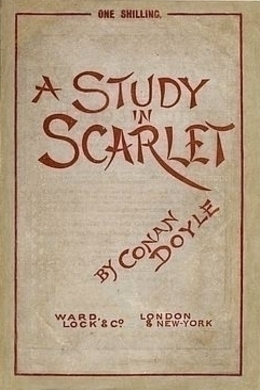



"I seem to have dropped into a sort of council of war." "Are you-are you sure of this piece of intelligence?" stammered Gregson. "The plot thickens." "It was quite thick enough before," grumbled Lestrade, taking a chair. I stared in silence at Sherlock Holmes, whose lips were compressed and his brows drawn down over his eyes. Gregson sprang out of his chair and upset the remainder of his whiskey and water. THE intelligence with which Lestrade greeted us was so momentous and so unexpected, that we were all three fairly dumfoundered. A Study in Scarletwas the first work of detective fiction to incorporate the magnifying glass as an investigative tool. The novel was followed by The Sign of the Four, published in 1890. Only 11 complete copies of the magazine in which the story first appeared, Beeton's Christmas Annual for 1887, are known to exist now and they have considerable value. Although Conan Doyle wrote 56 short stories featuring Holmes, A Study in Scarlet is one of only four full-length novels in the original canon. The story, and its main characters, attracted little public interest when it first appeared. The book's title derives from a speech given by Holmes, an amateur detective, to his friend and chronicler Watson on the nature of his work, in which he describes the story's murder investigation as his "study in scarlet": "There's the scarlet thread of murder running through the colourless skein of life, and our duty is to unravel it, and isolate it, and expose every inch of it." (A "study" is a preliminary drawing, sketch or painting done in preparation for a finished piece.) Watson, who would become among the most famous characters in literature. Written in 1886, the story marks the first appearance of Sherlock Holmes and Dr. A Study in Scarlet is an 1887 detective novel by British author Arthur Conan Doyle.


 0 kommentar(er)
0 kommentar(er)
